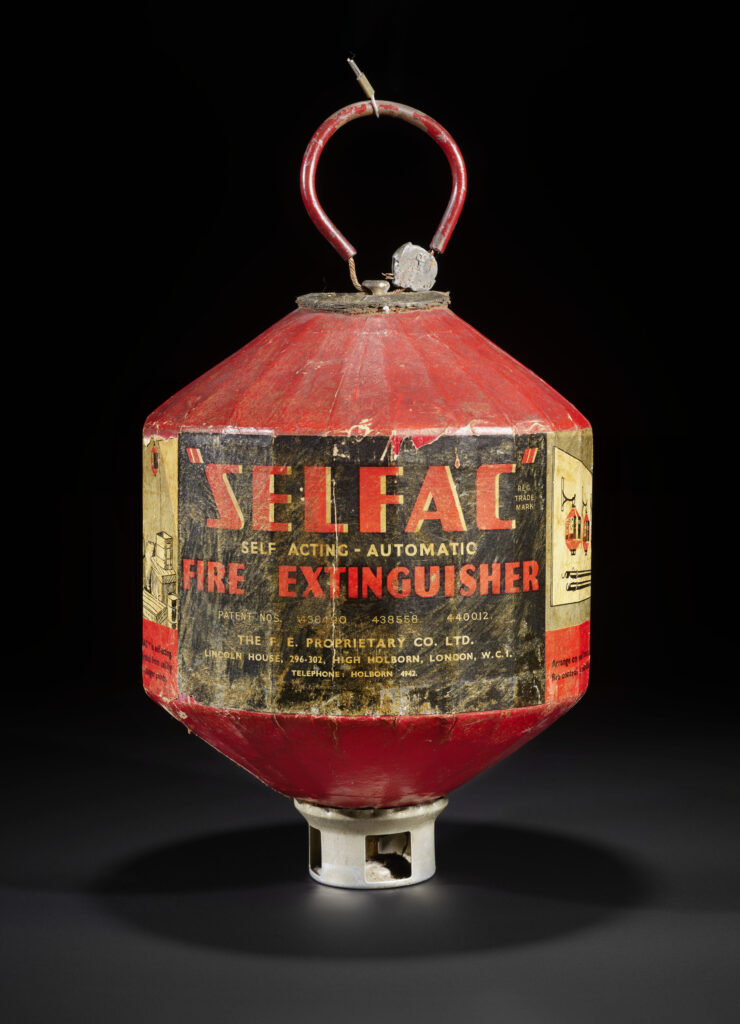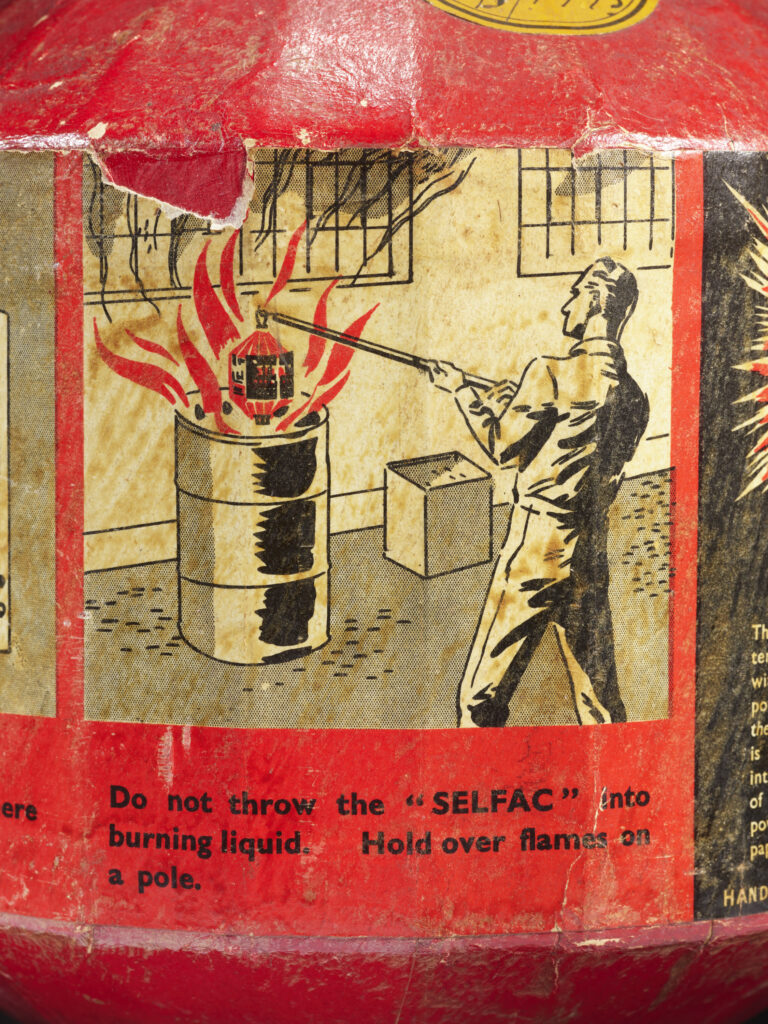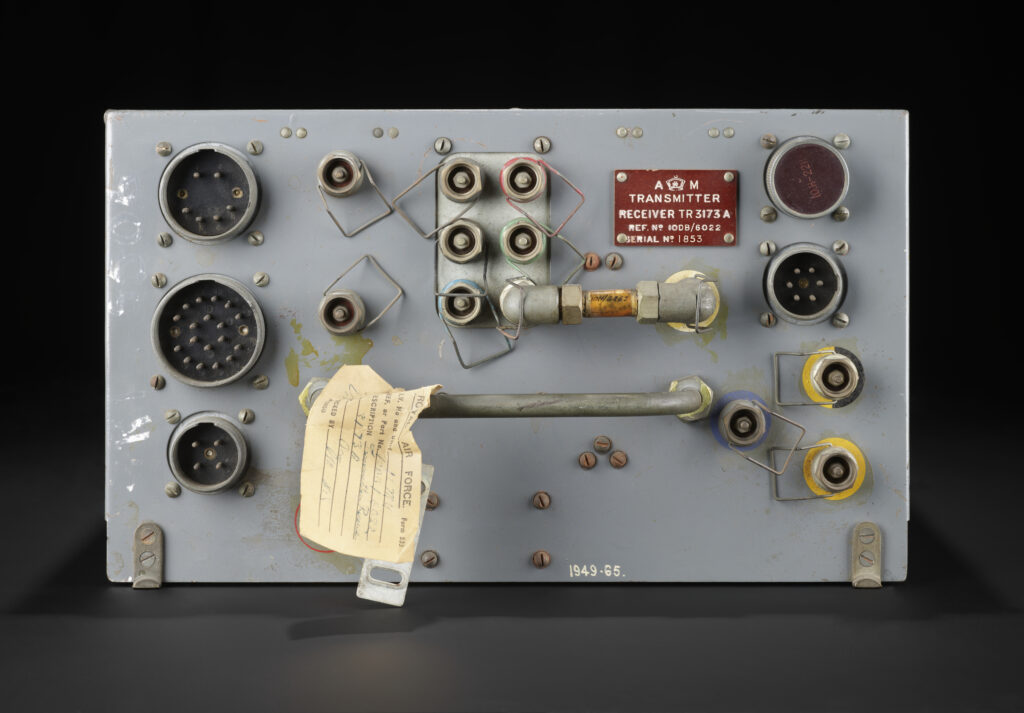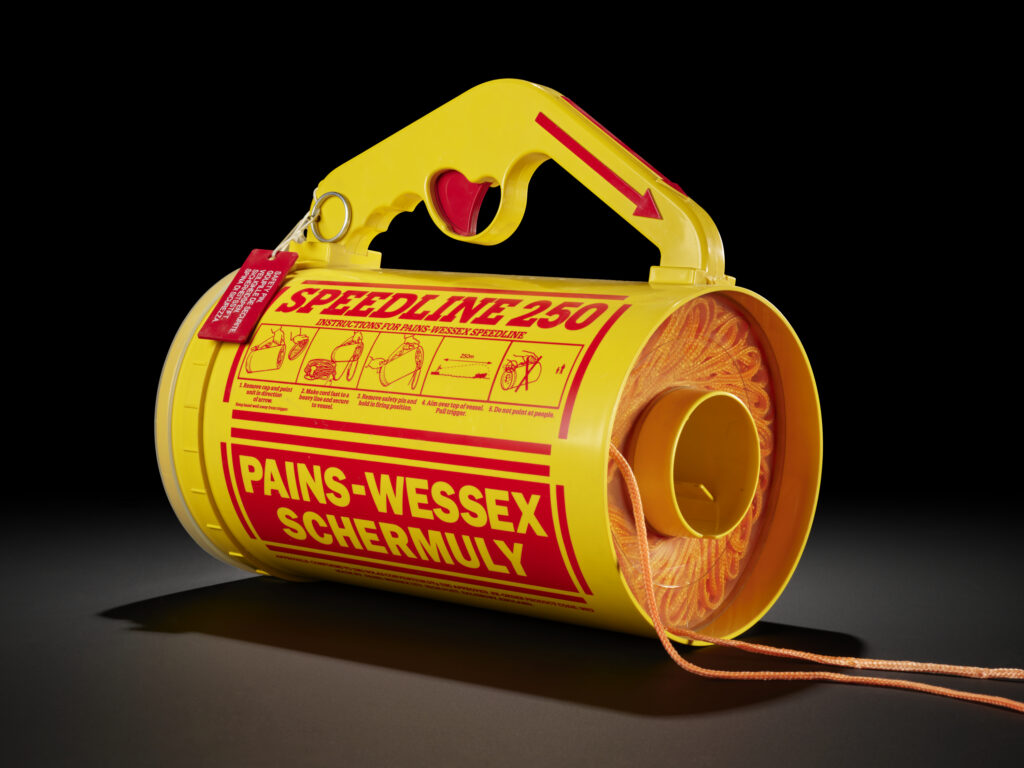Working with objects from the Science Museum Group Collection brings its fair share of surprises. At the National Collections Centre we’ve recently unpacked several fascinating and formerly explosive objects as part of our preparations to open our new collection management facility for public tours, school and research visits in 2024.
‘Selfac’ Automatic Fire Extinguisher by F.E. Proprietary Co. Ltd., England, 1940

This curious object used an explosive charge to extinguish fires (the explosives were removed when this object joined the collection). These self-actuating (SELFAC) extinguishers would be hung from the ceiling using a wire. In the event of a fire, a small washer on the ceiling would melt and the wire would uncoil. When fully extended, the wire would trigger an internal detonator to ignite the charge and disperse the contained extinguishing material over the fire.

These devices were manufactured in their thousands during the Second World War, however those that remain need to be treated with caution. In 2019, the military had to be called to perform a controlled detonation on two extinguishers found in a house in Edinburgh.
Radio Equipment

Explosives can also be found in more unusual places. This object is a part of a short-range radio system called the Rebecca – Eureka MKII which was used to aid communication during the deployment of supplies and paratroopers from aircraft in the Second World War.
The Eureka transmitter was operated by soldiers on the ground, enabling communication with the operator of the receiver, named Rebecca, in an aircraft carrying paratroopers or supplies. To avoid the enemy eavesdropping on radio communications, Friend or Foe was introduced ensuring that communications were private.
A Friend or Foe encryption is a specialised signal scrambler unique to certain equipment, this ensures that only the desired equipment can be used to decipher and send encrypted messages. As this technology was a heavily guarded secret, a detonator was built into the radio equipment so this sensitive technology could be destroyed to avoid capture. These emergency measures were triggered by the radio operator via the main console or individually by two wires at the back of the unit.
Rocket Powered Lifeline

Explosives can also help save lives. After serving in the Royal Navy until 1880 and witnessing lives lost to drowning, Robert Schermuly invented a line throwing appliance, a rocket attached to a rope, that could help those washed overboard.
Initially used in bulk by the Canadian Army during the First World War, the value of the Schermuly line thrower was soon recognised globally. In the early 1900s, the British government made it a legal requirement for ships of a certain size to carry the Schermuly line launcher.
Since its creation, it has been improved and modified to increase range and mobility and is still in use today.
Conclusion
Given the significance of explosives within science and technology, it is no surprise there are several examples of objects in the Science Museum Group Collection which previously contained explosives.
To ensure there’s no risk to staff (or the collection) when working with these items, any explosive items are removed when the objects join the collection. Our specialist teams also regularly check the condition of objects in our museums and stores, looking out for any potential hazards (from sharp edges to hazardous chemicals) and addressing any issues they find.